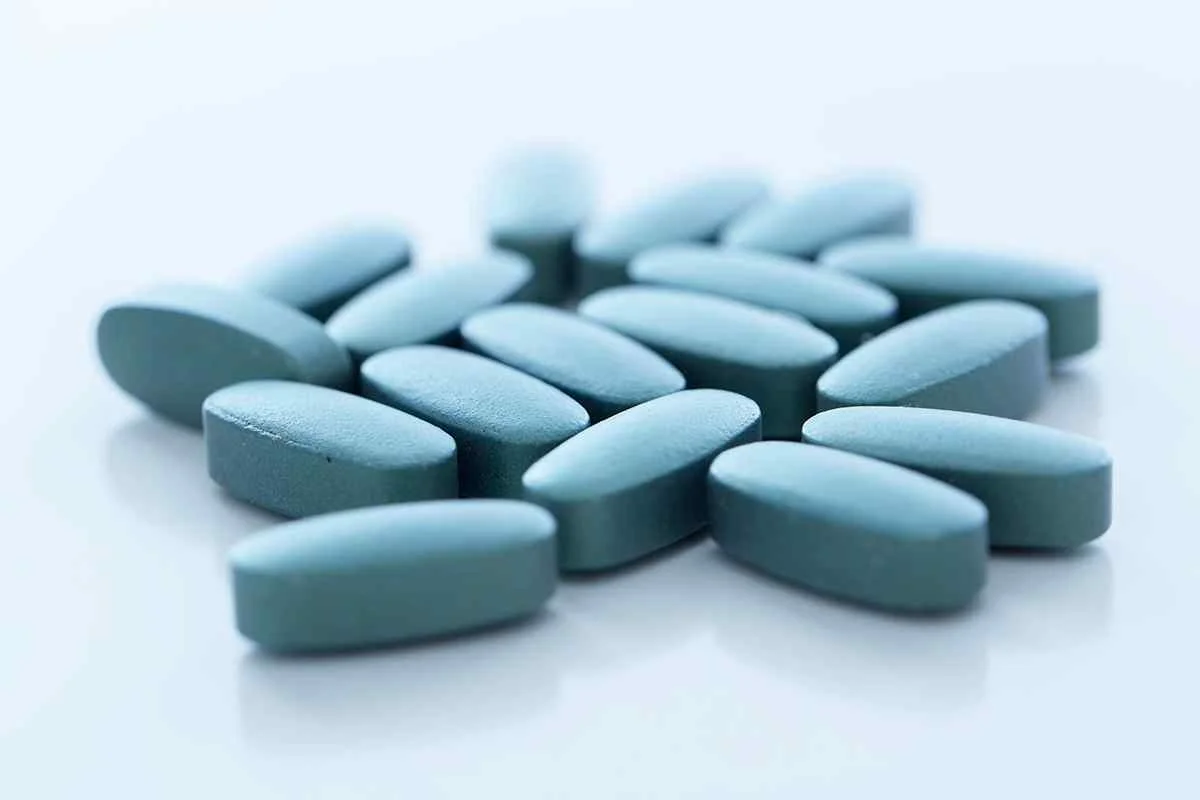Vilazodone
Common Trade Names: Viibryd

Other Names: vilazodone hydrochloride, 5-[4-[4-(5-cyano-1H-indol-3-yl)butyl]piperazin-1-yl]-1-benzofuran-2-carboxamide;hydrochloride
Vilazodone is a selective serotonin reuptake inhibitor (SSRI). SSRIs are among the many classes of antidepressants indicated for the treatment of major depressive disorder (MDD). The risk of developing addiction to vilazodone is low, especially when it is taken within its therapeutic range. However, for patients with a history of substance abuse, the potential of vilazodone as a habit-forming drug becomes much higher. Read on to know more about vilazodone below.
A Brief History of Vilazodone
On March 23, 2010, a New Drug Application (NDA) for vilazodone was submitted to the US Food and Drug Administration (FDA) by the global biotechnology company Clinical Data, Inc. A US patent for the same drug was granted to Clinical Data, Inc. on November 16, 2010.
The US FDA approved vilazodone for the treatment of major depressive disorder on January 21, 2011 and four years later, on March 16, 2015, a lower therapeutic dose of vilazodone (20mg) was approved by the US FDA to accompany the 40mg recommended daily dose. This supplemental NDA approval for vilazodone has helped many physicians to expand their dosing options when using the drug for the management of MDD among their adult patients.
How Does Vilazodone Work in the Human Body?
Vilazodone is a dual-acting SSRI and a 5-HT1A partial agonist. SSRIs are a class of antidepressants that work by binding to the serotonin receptors within the central nervous system (CNS). This inhibits serotonin reuptake, leading to an increase in the levels of circulating serotonin and the enhancement of serotonergic activity. Serotonin is a neurotransmitter responsible for the regulation of mood, and high levels of serotonin can improve symptoms related to depression.
The only US FDA-approved indication of vilazodone is for the treatment of major depressive disorder.
Vilazodone is contraindicated in patients who have known allergic or hypersensitivity reaction to it or any of its constituents. It is also contraindicated in patients who are taking or who have taken monoamine oxidase inhibitors (MAOIs) within 14 days prior to initiating vilazodone therapy so as to avoid developing serotonin syndrome.
As with other SSRIs, vilazodone has been observed to increase suicidal ideation in patients under the age of 25.
How Is Vilazodone Taken or Administered?
Vilazodone is available in 10, 20, and 40mg tablets taken orally. The initial dose of vilazodone for MDD is 10mg once daily for seven days, to be titrated upward to 20mg once daily for an additional seven days, then an increase to 40mg once daily.
The recommended dose for vilazodone is 40mg once daily. It should be taken with food as taking it in a fasting state can decrease its blood concentrations by 50%. This diminishes the effect of vilazodone in some patients.
The efficacy of vilazodone beyond eight weeks has not been well-studied. Therefore, patients requiring long-term therapy of vilazodone for MDD must be regularly reassessed to determine the appropriateness of the current dose and the need to maintain therapy. In addition, pregnant patients who may require vilazodone therapy must be put under active surveillance, as studies have shown that neonates with exposure to serotonergic antidepressants such as vilazodone in the late third trimester are at risk of developing complications. Treatment for these complications may necessitate respiratory support, tube feeding, and prolonged hospitalization.
What Are the Immediate and Long-Term Effects of Vilazodone Use?
The most common adverse reactions seen in patients taking vilazodone are:
- Diarrhea
- Nausea and vomiting
- Insomnia
- Blurred vision
- Dry eye
- Decreased appetite
- Migraine
- Sedation
- Increased sweating
- Night sweats
Less frequently, the following may also be observed:
- Cardiac arrhythmias
- Cataracts
- Altered perception of taste
- Panic attack
- Mania
- Urinary frequency
As mentioned above, co-administration of vilazodone with other serotonergic drugs such as MAOIs and triptans can predispose one to serotonin syndrome. This may be characterized by:
- Nausea and vomiting
- Diarrhea
- Dizziness
- Increased heart rate
- Blood pressure instabilities
- Hyperthermia
- Hyperreflexia
- Incoordination
- Tremor
- Myoclonus
- Hallucinations
- Extreme agitation
- Seizures
- Coma
Serotonin syndrome may also resemble Neuroleptic Malignant Syndrome (NMS), which is a potentially fatal condition that manifests as:
- Hyperthermia
- Muscle rigidity
- Autonomic instability
- Mental status changes
Patients under vilazodone therapy must be followed closely for the development of serotonin syndrome or NMS-like adverse reactions.
Overdose of vilazodone may occur at doses between 200 and 280mg, and this can present as:
- Serotonin syndrome
- Lethargy
- Restlessness
- Disorientation
- Hallucinations
Abrupt cessation of vilazodone use can also cause withdrawal symptoms, such as:
- Nausea and vomiting
- Dizziness
- Irritability
- Headache
- Fever
- Agitation
Signs of Vilazodone Use Disorder
While vilazodone has not been shown to lead to abuse or dependence in human studies, the extent to which a psychotropic drug can be misused, abused, or diverted cannot be fully predicted on the basis of clinical experience. As such, physicians who plan to prescribe vilazodone must carefully evaluate patients for a history of substance or alcohol abuse and observe them closely for signs that indicate a risk for addiction.
The Diagnostic and Statistical Manual of Mental Disorders – 5th Edition (DSM-5) lists 11 criteria for Substance Use Disorders (SUD). It has divided these criteria into four major categories of the pathologic behavioral patterns associated with vilazodone use disorder:
- Impaired control
- Social impairment
- Risky use
- Pharmacological indicators (tolerance and withdrawal)
Below are the 11 criteria necessary for the clinical diagnosis of vilazodone use disorder:
Impaired Control
- Taking vilazodone in larger amounts or for an extended period of time
- Not managing to stop using vilazodone despite many attempts
- Taking a lot of time getting, using or recovering from vilazodone
- Experiencing strong cravings for or urges to use vilazodone
Social Impairment
- Vilazodone use leads to family or work problems that may manifest as absenteeism, financial liabilities or poor performance
- Vilazodone use leads to problems in interpersonal relationships
- Vilazodone use disables one from attending important social and recreational activities
Risky Use
- Sustained use of vilazodone despite being in a hazardous or high-risk situation, such as while driving a car or using heavy machinery
- Sustained use of vilazodone despite aggravation of existing medical conditions or emergence of new ones
Physical Tolerance
- Requiring higher doses or more frequent intake of vilazodone to achieve or maintain its desired effects (tolerance)
- Developing withdrawal symptoms immediately after abrupt discontinuation of vilazodone use (withdrawal)
Rehab and Treatment for Vilazodone Use Disorder
Most cases of vilazodone use disorder can be managed with an individualized treatment program created by rehab care professionals. Generally, rehab begins with a process called detoxification, or detox for short. The approach to detox can be medical or non-medical.
Medical detox involves the use of pharmacological strategies aimed at safely eliminating the accumulation of vilazodone from the body in order to reverse the body’s tolerance to the drug. This may be done by slowly reducing the dose of vilazodone over a period of several weeks. Gradual dose reduction is preferred over abrupt discontinuation so as to prevent the development of withdrawal symptoms, which can range from mild to severe. However, even when gradual dose reduction is applied, patients must be regularly monitored for withdrawal symptoms. If symptoms become unbearable, physicians may consider resuming the previously tolerated dose and decreasing the dose at a slower rate. Drug replacement therapy may also be initiated, in which vilazodone will be replaced with an alternative drug that has the same benefits but with a less addictive profile.
Non-medical detox focuses on the mental and emotional well-being of patients undergoing treatment. These interventions, which include counselling, individual therapy, motivational interviewing, and group therapy, among others, aim to provide psychosocial support to patients as they battle addiction. Clinical studies have proven that these interventions can significantly reduce relapse episodes and improve recovery rates by helping patients overcome their relapse triggers in a healthy manner.
One of the key factors in a successful recovery is individualized treatment. This simply means that treatment programs must be tailor-fit to the patient’s needs for them to be effective. Before initiating any treatment program, it is important to conduct a comprehensive assessment of the patient to evaluate his current condition and identify problem areas that must be addressed. This involves a complete medical history, physical examination, and laboratory workups.
The interventions mentioned above may be done in an outpatient or inpatient setting, depending on the patient’s clinical status, financial capability, and their ability to commit to therapy. In general, outpatient therapy may be suitable for patients with mild or tolerable symptoms and those who can guarantee to finish treatment. In contrast, patients who have severe symptoms or those with a history of incompliance to treatment may require inpatient or residential therapy.
Get the Help You Need
Achieving a substance-free state requires a patient-centered, individualized rehab program crafted by licensed rehab professionals. Get the treatment that’s right for you with the help of Better Addiction Care’s partner rehab centers across the country. Browse through our directory and get in touch with a rehab center near you. For more information, you may call our hotline or submit a contact form.







